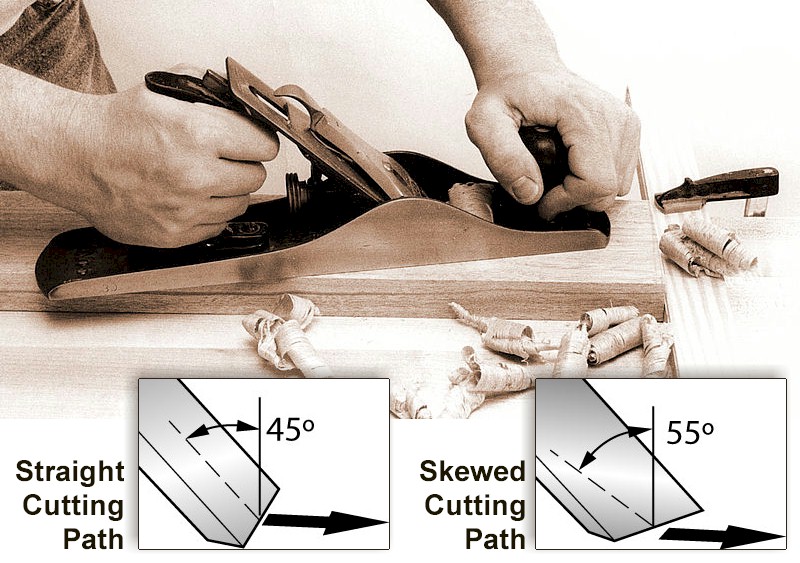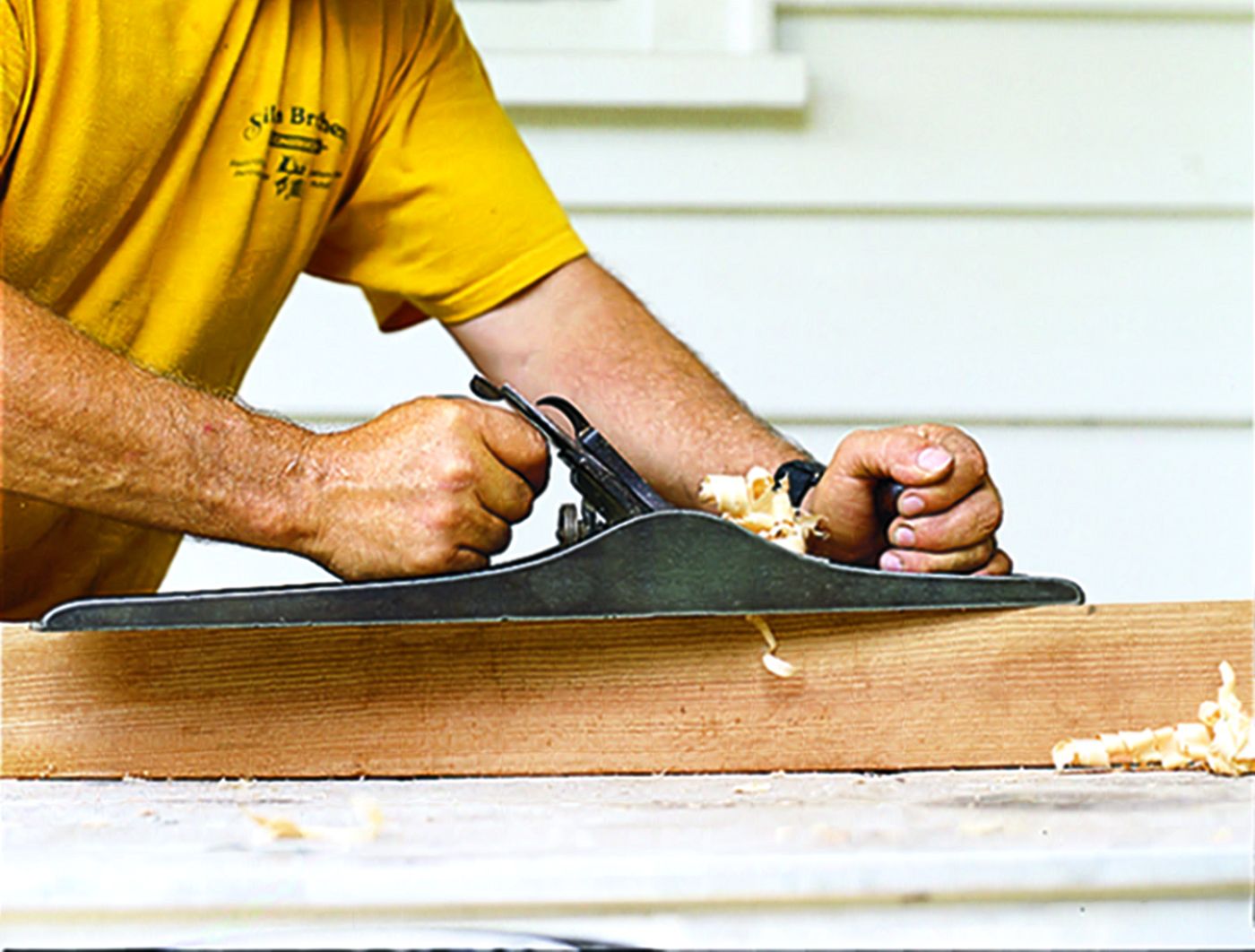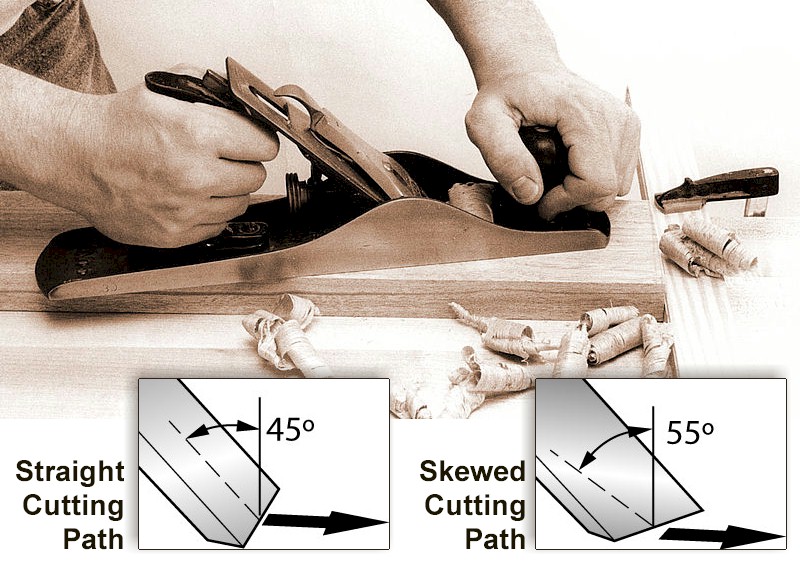Have you ever wondered what a hand plane is and what it does? Well, you’ve come to the right place! In this article, we’ll uncover the magic of hand planes and why they are an essential tool for woodworking enthusiasts like yourself.
Now, you might be thinking, “What does a hand plane do, anyway?” Simply put, a hand plane is a versatile tool used to shape and smooth wood surfaces. It’s like a trusty sidekick for woodworkers, helping them achieve precise cuts, flatten rough lumber, and create beautifully finished pieces.
Whether you’re a beginner or a seasoned woodworker, understanding how to use a hand plane properly can make all the difference in your projects. So, let’s dive in and explore the fascinating world of hand planes together!

What Does a Hand Plane Do? Exploring the Versatility of this Woodworking Tool
Hand planes are indispensable tools in the world of woodworking. They are versatile, allowing craftsmen to shape and smooth wood surfaces with precision and ease. From removing rough saw marks to creating intricate details, hand planes have a wide range of functions. In this article, we will delve into the various uses of hand planes, their benefits, and provide tips for using them effectively.
The Basics of Hand Planes
Hand planes are manual tools used for shaping, smoothing, and truing wood surfaces. They consist of a sharp iron blade (also known as a plane iron) housed in a body that is usually made of wood or metal. The plane iron protrudes from the base of the plane and is adjusted to the desired depth of cut. As the user pushes the plane across the wood surface, the blade shaves off thin layers, leaving behind a smooth and even finish.
Hand planes come in various shapes and sizes, each designed for specific tasks. Some common types include bench planes, block planes, and shoulder planes. Bench planes are larger and are used for flattening and smoothing large surfaces. Block planes are smaller and are perfect for trimming end grain and performing delicate tasks. Shoulder planes have adjustable mouths and are ideal for refining joints and creating precise edges.
The Uses of Hand Planes
1. Smoothing: One of the primary functions of a hand plane is to smooth rough wood surfaces. Whether you’re working with hardwood or softwood, a hand plane can quickly and efficiently remove imperfections, such as tear-out caused by saws. By using a series of light and steady passes, you can achieve a glass-like finish on your wood piece.
2. Thicknessing: Hand planes are also used for reducing the thickness of wood. When you need to create a specific thickness or remove excess material, a hand plane can be your ally. It allows for precise control over the amount of material being removed, making it an indispensable tool in woodworking.
3. Shaping and Chamfering: Hand planes excel at shaping wood, allowing you to create intricate curves and profiles. Whether you’re shaping the edge of a tabletop or sculpting a decorative trim, a hand plane gives you the control and precision to achieve your desired shape. Additionally, hand planes can be used to create chamfers or bevels on edges for decorative or functional purposes.
4. Jointing: When working with boards or creating joints, hand planes are essential tools for achieving a perfect fit. By ensuring that the edges are straight and flat, hand planes help create strong and seamless joints. This is particularly useful when building furniture or cabinetry where precise joinery is crucial.
5. Trimming and Flattening End Grain: End grain poses a challenge when it comes to woodworking, but hand planes are up to the task. Block planes, in particular, are excellent for trimming and smoothing end grain surfaces. They can also be used for flattening the end grain of tenons or creating beveled edges.
6. Creating Rabbets and Rebates: Hand planes are versatile in creating rabbets and rebates, which are indents or grooves cut along the edge or face of a piece of wood. These features are commonly used for joinery or to accommodate other wood components. With the precision of a hand plane, you can create clean and accurate rabbets and rebates effortlessly.
Tips for Using Hand Planes Effectively
1. Start with sharp blades: A sharp blade is essential for achieving clean cuts and a smooth finish. Regularly sharpen your plane blades using sharpening stones or systems to maintain their effectiveness.
2. Set the blade depth properly: Adjust the depth of cut based on the desired thickness of material to be removed. Start with a shallower depth and gradually increase it until you achieve the desired result.
3. Work with the grain: Planing against the grain can result in tear-out and a rough surface. Always work in the direction of the wood grain to achieve the best results.
4. Maintain a consistent pressure: Apply even pressure across the length of the plane to achieve an even surface. Avoid using excessive force as it may cause the plane to chatter or dig too deep into the wood.
5. Secure your workpiece: Ensure that your workpiece is firmly clamped or held securely to prevent it from moving while planing. This will help maintain stability and accuracy in your cuts.
6. Use multiple planes for different tasks: Depending on the project, it’s beneficial to have a selection of hand planes. Invest in a few different types and sizes to handle various woodworking tasks with ease.
7. Practice and patience: Like any skill, mastering the use of hand planes takes practice and patience. Start with simple projects or practice pieces to hone your technique before working on more complex projects.
The Benefits of Using Hand Planes
Using hand planes offers several advantages for woodworkers. Here are some of the key benefits:
1. Precision: Hand planes allow for precise control over the material removal, allowing you to achieve the desired results accurately. This level of precision is particularly beneficial when working on intricate details or achieving perfect joints.
2. Versatility: Hand planes can tackle a wide range of woodworking tasks, from simple smoothing to complex shaping. Their versatility makes them a valuable addition to any woodworker’s toolbox, as they can replace or complement power tools depending on the situation.
3. Portability: Unlike power tools, hand planes are portable and do not require electricity. This makes them ideal for woodworking projects on the go or in remote areas where power may not be available.
4. Connection to the Craft: Working with hand tools, such as hand planes, connects craftsmen to the traditional techniques and methods employed by generations before them. It provides a sense of satisfaction and craftsmanship that is highly valued in the woodworking community.
5. Aesthetic Appeal: Hand planes offer a level of craftsmanship and attention to detail that can be seen and appreciated in the final piece. They can create unique surface textures and finishes that are often difficult to achieve with power tools.
When used skillfully, hand planes can elevate your woodworking projects to a whole new level. They provide a sense of artistry and precision that power tools often cannot replicate. So, embrace the hand plane and experience the satisfaction of creating beautiful, handcrafted pieces that will be cherished for years to come.
Key Takeaways: What Does a Hand Plane Do?
- A hand plane is a woodworking tool used for flattening and smoothing surfaces.
- It has a sharp blade that shaves off thin layers of wood to achieve a smooth finish.
- Hand planes can be used for various tasks, such as removing saw marks or leveling joints.
- They require skill and practice to use effectively, but can produce beautiful results.
- Hand planes can be used on a wide range of materials, including wood, plastic, and even metal.
Frequently Asked Questions
Welcome to our FAQ section on hand planes! Here, we’ll answer some common questions about what hand planes do and how they can be used. Whether you’re a woodworking enthusiast or just curious about this tool, we’ve got you covered.
1. What exactly does a hand plane do?
A hand plane is a woodworking tool that helps smooth and shape wood surfaces. It consists of a cutting blade, or iron, attached to a flat base, or body. By using physical force, typically by pushing the plane forward, the blade shaves off thin layers of wood, leaving a smooth and even surface behind.
Hand planes are incredibly versatile and can be used for a variety of tasks, such as flattening large areas, chamfering edges, removing rough spots, and creating intricate profiles in wood. They are essential for achieving precision and fine craftsmanship in woodworking projects.
2. How does a hand plane differ from power tools?
One key difference between a hand plane and power tools is the level of control and precision they offer. While power tools like sanders or electric planers are efficient for removing larger amounts of material quickly, hand planes allow for more fine-tuning and delicate work.
With a hand plane, you have the ability to feel the texture and adjust the pressure as you work. This makes it easier to achieve desired results, especially when dealing with irregularities or delicate grains in wood. Hand planes also give woodworkers the freedom to work without the need for electricity or loud machinery.
3. Can a beginner use a hand plane?
Absolutely! Hand planes are suitable for woodworkers of all skill levels, including beginners. In fact, they can be a great tool to start with, as they teach important fundamentals of woodworking like proper technique, grain orientation, and wood surface preparation.
While using a hand plane may require some practice to become proficient, it can also be a rewarding and enjoyable process. Start with simpler projects, such as smoothing a surface or creating a simple chamfer, and gradually progress to more complex tasks as you gain confidence and skill.
4. Are there different types of hand planes?
Yes, there are various types of hand planes, each designed for specific woodworking tasks. Some common types include block planes, smoothing planes, jack planes, and jointer planes. Each type has its own unique features and purposes.
For example, block planes are small and handy for end grain work and small-scale planing. Smoothing planes are ideal for achieving a polished and smooth finish. Jack planes are versatile and can tackle a range of tasks, while jointer planes are used for flattening long surfaces, such as tabletops or boards.
5. How do I maintain a hand plane?
To keep your hand plane in top condition, regular maintenance is key. Here are a few tips:
First, make sure to keep the blade sharp. Dull blades can lead to tear-outs and rough surfaces. Regularly sharpen the blade using sharpening stones or honing guides. Second, lubricate any moving parts with a light coat of oil to prevent rust and ensure smooth operation. Finally, store your plane in a dry place, away from moisture and extreme temperature changes.
By taking care of your hand plane, it will continue to serve you well and produce excellent results in your woodworking projects for years to come.

Summary
So, what does a hand plane do? Hand planes are tools that help shape and smooth wood. They have a sharp blade, called a plane iron, that shaves off thin layers of wood.
Hand planes can be used to flatten surfaces, trim edges, and create smooth finishes on wood. They are versatile tools that are commonly used by woodworkers, carpenters, and DIY enthusiasts. So, if you ever find yourself working with wood, a hand plane can be a handy tool to have in your collection!
